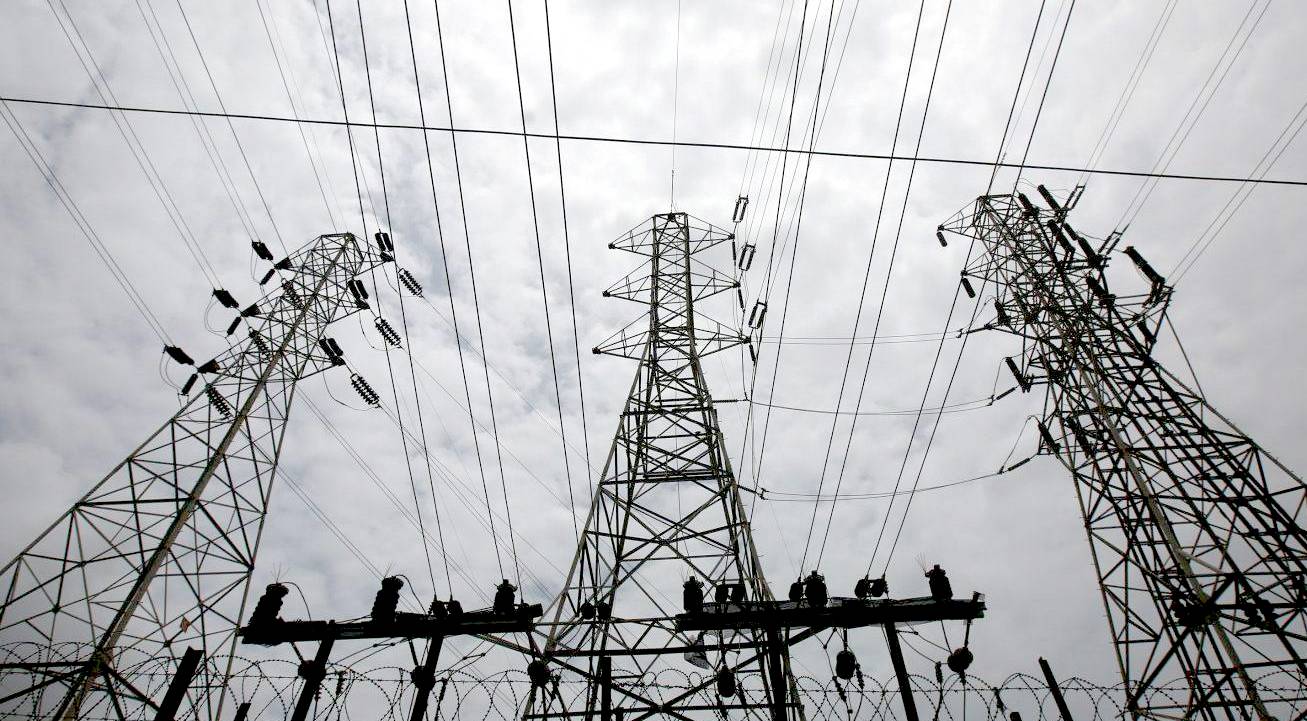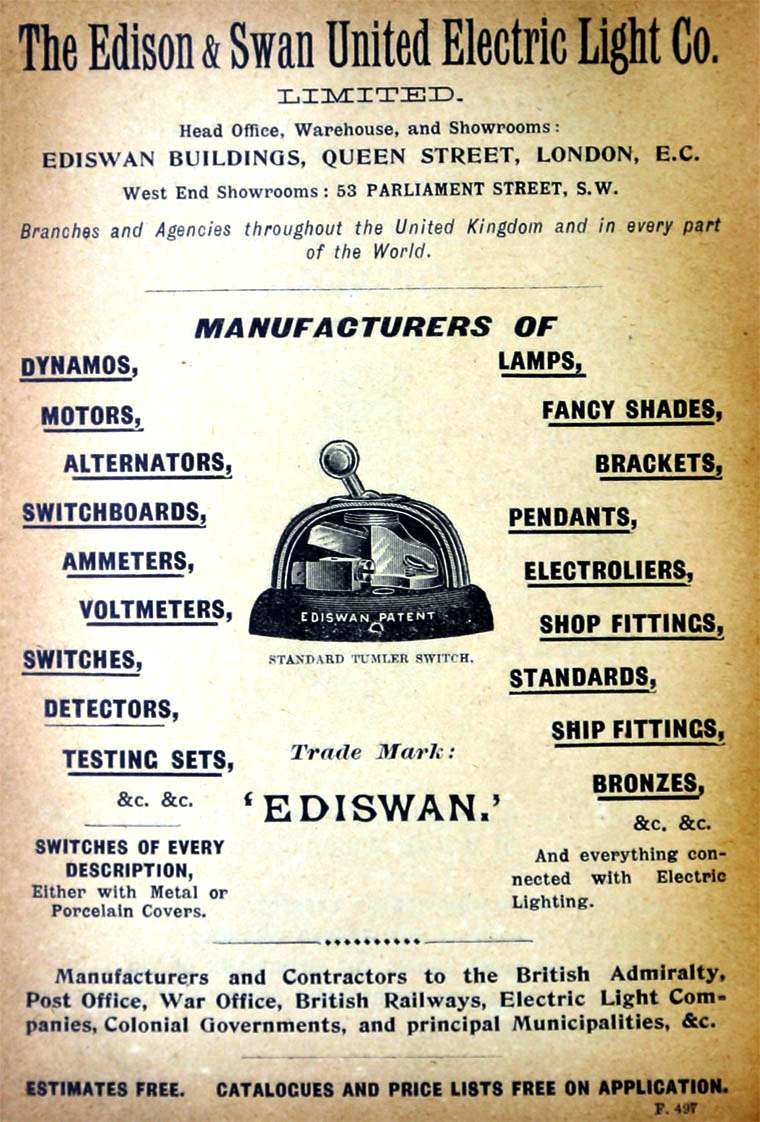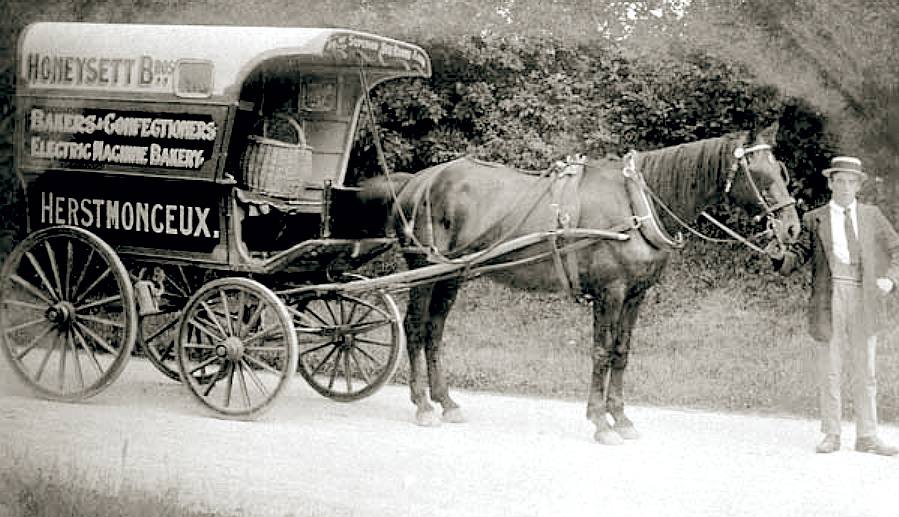|

The
electrical power generation industry began when light bulbs and other
devices that needed reliable energy supplies were invented. Telephones and
televisions all needed electricity.
Holborn Viaduct power station, named the
Edison Electric Light Station, was the world's first coal-fired power station generating electricity for public use. It was built at number 57 Holborn Viaduct in central London, by
Joseph
Swan, Thomas
Edison's Edison Electric Light Company.
The plant began running on 12 January 1882, three years after the invention of the carbon-filament incandescent light bulb. It burnt coal to drive a steam turbine which drove a 27-tonne (27-long-ton; 30-short-ton), 125 horsepower (93 kW) generator which produced direct current (DC) at 110 volts.
It initially lit 968 16-candle incandescent lamps to provide street lighting from Holborn Circus to St. Martin's Le Grand, which was later expanded to 3,000 lamps. The power station also provided
electricity
for private residences, which may have included nearby Ely Place. Having run at a significant loss the station closed in September 1886, and the lamps were converted back to gas.
Edison opened a second coal-fired power station in September 1882 in the United States, at
Pearl Street Station in New York
City.
In 1878, the City of London Corporation had installed 16 electric arc lamps over the viaduct, but the experiment was discontinued within six months, and the bridge returned to gas lighting. The Victoria Embankment was lit with electric lamps at around the same time, using the Yablochkov candles demonstrated at the Exposition Universelle in Paris in 1878.
The Holborn Viaduct project was preceded by two months by an electricity supply from a water wheel in
Godalming, Surrey – the world's first public
electricity supply. This hydroelectric project was on a much smaller scale, however, with a 10 horsepower (7.5 kW) generator running 4 arc lamps and 27 incandescent lamps.
Lacking the legal precedent to lay underground cables (digging the street was the sole prerogative of the gas companies), Edison's associate Edward Hibberd Johnson discovered culverts existed on the Holborn Viaduct which would allow for electrical cables to be laid.
The American-built 'Jumbo' generator (named after P.T. Barnum's circus elephant) was driven by a Porter-Allen steam engine built by Babcock & Wilcox.
The station was on Crown property and so could not be extended, and was running at a significant annual loss. It closed in September 1886 and the lamps were converted back to gas.
This historic building no longer exists, hence cannot be a UNESCO
world heritage site.


SWITCHES
& BULBS - Where would we be without electric lighting. A battle
royal ensued in the law courts and Thomas Edison and Joseph Swan slogged it
out in the London High Court, ending with the combatants working together as
the Edison & Swan United Electric
Light Co. ELECTRIC
BAKERY - The earliest surviving generating station, dating from C. 1900,
with battery based load levelling as the core technology, coupled to a 48 volt DC generator, is in the little village of Herstmonceux,
Sussex.
The
First and Second World Wars accelerated technology faster than ever before,
as part of an arms race, where the most advanced weapons would win the
battle for a (relatively) free world. Until nuclear power reared its ugly
head.
Please
use our A-Z
INDEX to navigate this site
This
website is provided on a free basis to
promote zero emission transport from renewable energy in Europe and Internationally.
Copyright ©
Universal Smart Batteries and Climate Change Trust 2022. Solar
Studios, BN271RF, United Kingdom.
|


